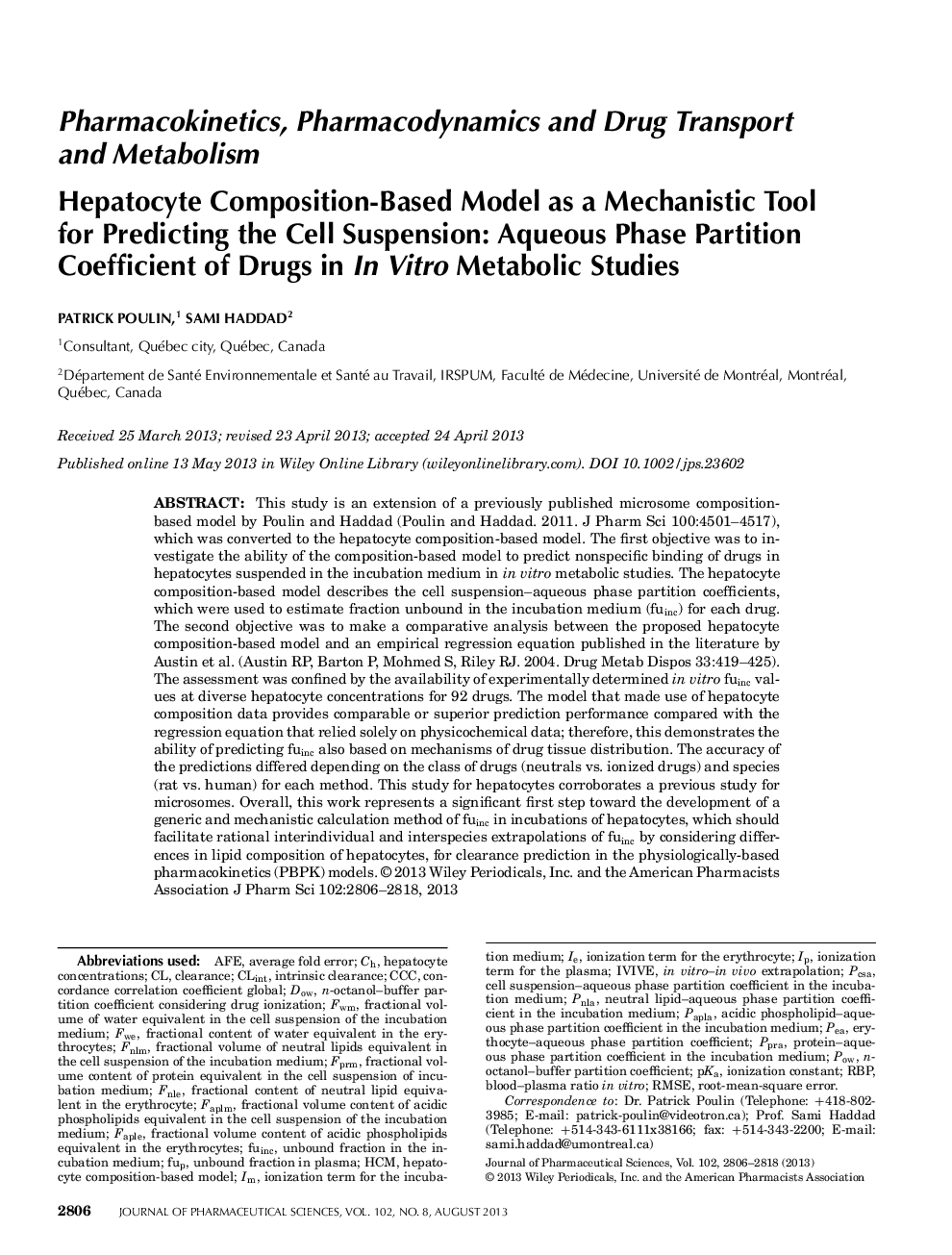| Article ID | Journal | Published Year | Pages | File Type |
|---|---|---|---|---|
| 10162712 | Journal of Pharmaceutical Sciences | 2013 | 13 Pages |
Abstract
This study is an extension of a previously published microsome composition-based model by Poulin and Haddad (Poulin and Haddad. 2011. J Pharm Sci 100:4501-4517), which was converted to the hepatocyte composition-based model. The first objective was to investigate the ability of the composition-based model to predict nonspecific binding of drugs in hepatocytes suspended in the incubation medium in in vitro metabolic studies. The hepatocyte composition-based model describes the cell suspension-aqueous phase partition coefficients, which were used to estimate fraction unbound in the incubation medium (fuinc) for each drug. The second objective was to make a comparative analysis between the proposed hepatocyte composition-based model and an empirical regression equation published in the literature by Austin et al. (Austin RP, Barton P, Mohmed S, Riley RJ. 2004. Drug Metab Dispos 33:419-425). The assessment was confined by the availability of experimentally determined in vitro fuinc values at diverse hepatocyte concentrations for 92 drugs. The model that made use of hepatocyte composition data provides comparable or superior prediction performance compared with the regression equation that relied solely on physicochemical data; therefore, this demonstrates the ability of predicting fuinc also based on mechanisms of drug tissue distribution. The accuracy of the predictions differed depending on the class of drugs (neutrals vs. ionized drugs) and species (rat vs. human) for each method. This study for hepatocytes corroborates a previous study for microsomes. Overall, this work represents a significant first step toward the development of a generic and mechanistic calculation method of fuinc in incubations of hepatocytes, which should facilitate rational interindividual and interspecies extrapolations of fuinc by considering differences in lipid composition of hepatocytes, for clearance prediction in the physiologically-based pharmacokinetics (PBPK) models. © 2013 Wiley Periodicals, Inc. and the American Pharmacists Association J Pharm Sci 102:2806-2818, 2013
Keywords
Related Topics
Health Sciences
Pharmacology, Toxicology and Pharmaceutical Science
Drug Discovery
Authors
Patrick Dr, Sami Prof,
